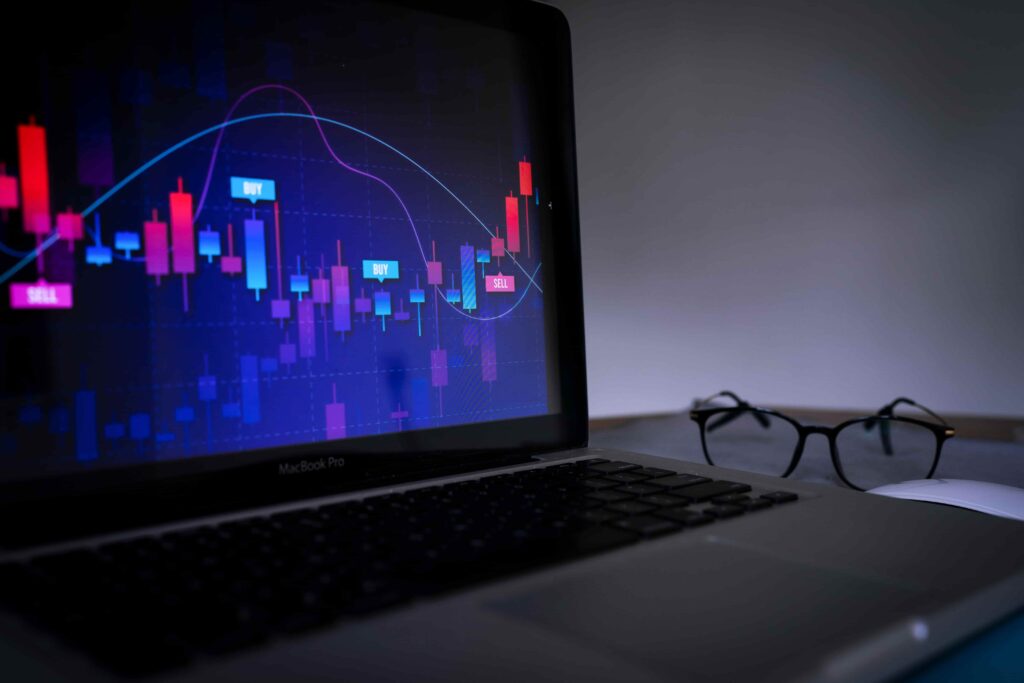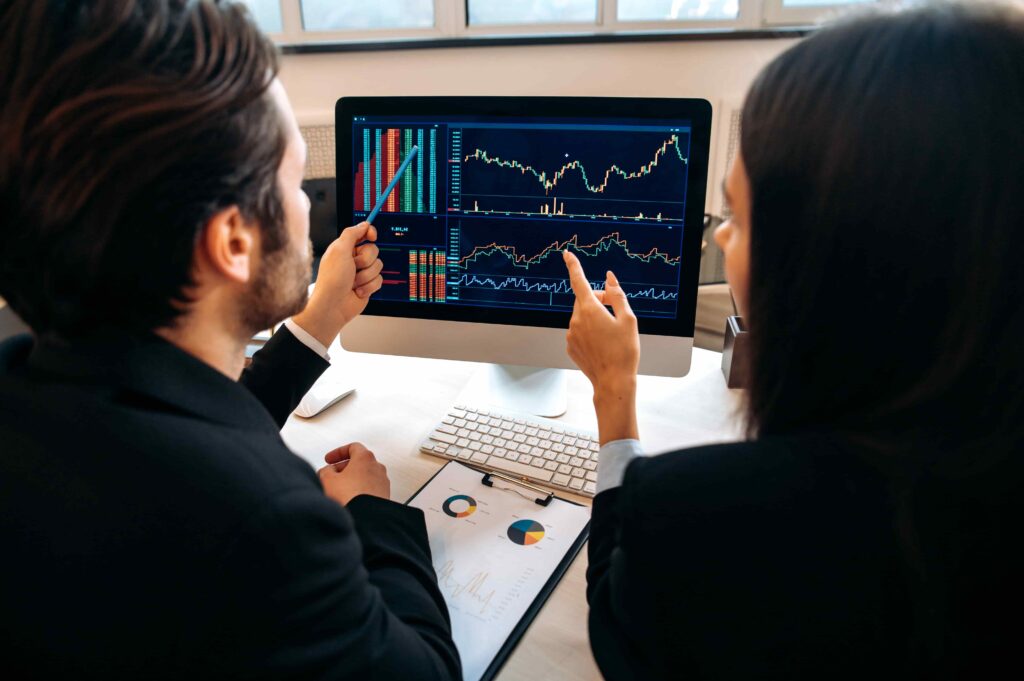Positional trading, often referred to as long-term trading, is a trading style where traders hold positions for extended periods, ranging from several weeks to months or even years. Unlike day or swing trading, positional trading is less about short-term market fluctuations and more about capturing significant price movements over time. This article will delve deep into the world of positional trading, exploring its nuances, strategies, and key considerations.
Key Takeaways:
- Positional trading focuses on long-term price movements rather than short-term fluctuations.
- It requires a deep understanding of fundamental analysis.
- Effective risk management is crucial for success in positional trading.
- Positional traders need patience and discipline to let their trades play out.

The Fundamentals of Positional Trading
What Sets Positional Trading Apart?
Positional trading is distinct from other trading styles due to its extended time horizon. While day traders might hold positions for hours and swing traders for days or weeks, positional traders are in it for the long haul. This approach allows them to ignore short-term market noise and focus on the broader trend.
Why Choose Positional Trading?
The benefits of positional trading include:
- Reduced Stress: Without the need to constantly monitor the markets, positional trading can be less stressful than shorter-term methods.
- Lower Transaction Costs: Trading less frequently means fewer transaction fees.
- Tax Efficiency: In many jurisdictions, long-term capital gains are taxed at a lower rate than short-term gains.
Strategies in Positional Trading
Fundamental Analysis
Fundamental analysis is at the heart of positional trading. Traders analyze various economic indicators, earnings reports, and other financial data to gauge an asset’s intrinsic value. If the current market price is below this intrinsic value, it might be a good buy, and vice versa. Learn more about fundamental analysis here.
Technical Analysis
While fundamental analysis is primary, positional traders also use technical analysis to time their entries and exits better. Technical tools can help identify strong support and resistance levels, trend strength, and potential reversal points.
Portfolio Diversification
Positional traders often diversify their portfolios across various assets and sectors. This diversification reduces risk and allows them to benefit from different market conditions.
Risk Management in Positional Trading
Setting Stop-Loss and Take-Profit Points
Even though positional traders are looking at the long term, they still need to protect their capital. Setting stop-loss points ensures they exit a position if the market moves against them. Similarly, take-profit points allow traders to lock in profits when a target is reached.
Regular Portfolio Review
Given the long-term nature of their trades, positional traders should regularly review their portfolios. This review helps them ensure their initial analysis still holds and that they’re not holding onto losing positions out of mere hope.
Hedging
Hedging involves taking a position that offsets a primary trade, protecting traders from adverse price movements. For instance, a trader bullish on tech stocks might hedge by taking a short position on a tech ETF.
Positional Trading vs. Other Trading Styles
Positional trading differs significantly from other trading styles:
|
Trading Style |
Time Horizon |
Analysis Type |
Trade Frequency |
|---|---|---|---|
|
Positional Trading |
Weeks to Years |
Mostly Fundamental |
Low |
|
Day Trading |
Hours |
Mostly Technical |
Very High |
|
Swing Trading |
Days to Weeks |
Technical & Fundamental |
Moderate |
Here’s a detailed comparison with swing trading.
The Challenges of Positional Trading
While positional trading offers several benefits, it’s not without challenges:
- Requires Patience: It can be challenging to watch short-term losses without panicking.
- Capital Lockup: Money invested in a positional trade can’t be used elsewhere until the trade is closed.
- Market Volatility: Over the long term, many external factors can impact a trade, from geopolitical events to economic downturns.
Positional trading is a unique approach to the markets, requiring a blend of patience, discipline, and in-depth analysis. While it’s not for everyone, those who can master its nuances stand to reap significant rewards. As with all trading styles, continuous learning and adaptation are key. For those interested in diving deeper into trading strategies, consider exploring more specialized resources.

Delving Deeper into Positional Trading Strategies
Sector Rotation
Sector rotation involves shifting investments from one sector of the economy to another, based on the economic cycle’s stages. As certain sectors outperform during specific phases, positional traders can capitalize on these predictable patterns to maximize returns.
Pair Trading
Pair trading involves taking simultaneous long and short positions in two related securities. The idea is to profit from the relative price movements of the two assets, regardless of the market’s overall direction. This strategy can be particularly effective in volatile markets.
Dividend Capture
Positional traders might also employ a dividend capture strategy, buying stocks before their ex-dividend date and selling them shortly after, capturing the dividend payout. This approach requires thorough research to ensure the stock’s price doesn’t drop by more than the dividend amount.
Real-World Scenarios in Positional Trading
The Dot-Com Bubble
During the late 1990s, the tech sector experienced rapid growth, leading to inflated stock prices and overvaluation. Positional traders who recognized the unsustainable nature of this growth and took short positions before the bubble burst in 2000 reaped significant profits.
The 2008 Financial Crisis
The housing market collapse in 2008 led to a global financial crisis. Positional traders who had analyzed the underlying risks in the mortgage industry and took bearish positions on financial stocks or bullish positions on safe-haven assets profited during this tumultuous period.
COVID-19 Pandemic
The global pandemic in 2020 led to unprecedented market volatility. Positional traders who anticipated long-term shifts in sectors like technology, healthcare, and e-commerce, adjusting their portfolios early on, benefited from the subsequent market movements.
The Future Landscape of Positional Trading
Technological Advancements
With the rise of artificial intelligence and machine learning, the future of positional trading may see more sophisticated tools for analysis and prediction, allowing traders to make more informed decisions.
Globalization and Geopolitical Shifts
As markets become increasingly interconnected, geopolitical events in one region can have ripple effects worldwide. Positional traders will need to adopt a more global perspective, understanding the intricacies of various markets and their interrelations.
Sustainability and ESG Investing
Environmental, Social, and Governance (ESG) investing is gaining traction. Positional traders will likely need to factor in a company’s ESG performance into their analysis, as these metrics become more influential in determining stock performance.
The Psychological Aspects of Positional Trading
Positional trading, given its long-term nature, requires a unique psychological makeup. Traders must cultivate:
- Patience: The ability to wait for a trade to play out, resisting the urge to exit prematurely.
- Discipline: Sticking to a trading plan, even when emotions suggest otherwise.
- Detachment: Not becoming too attached to any particular trade or outcome, understanding that losses are part and parcel of the trading journey.
Wrapping Up
Positional trading, with its focus on the long term, offers a unique lens through which to view the markets. While it requires patience, discipline, and a deep understanding of both technical and fundamental analysis, the rewards can be significant for those who master its nuances. As the financial landscape evolves, so too will the strategies and approaches of positional traders. Continuous learning, adaptability, and a keen understanding of global events will be key to success. For further insights into the world of trading, consider diving deeper into specialized resources.

